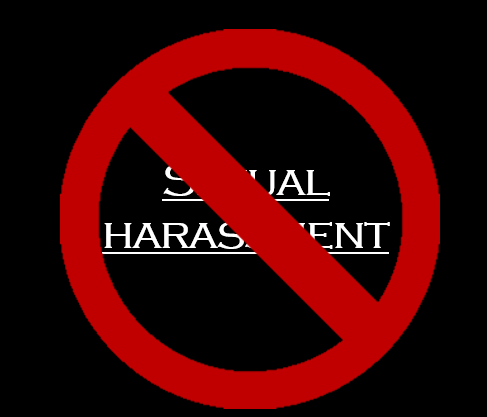
Cases of sexual harassment and assault occur everyday to both men and women. In a 2000-person national survey conducted in 2014, 65% of women and 25% of men said they have experienced street harassment.
What exactly is street sexual harassment?
According to stopstreetharassment.org, “Gender-based street harassment is unwanted comments, gestures, and actions forced on a stranger in a public place without their consent and is directed at them because of their actual or perceived sex, gender, gender expression, or sexual orientation.”
Colonia High School’s English and G&T teacher, Mr. Hutchinson, said, ” Both genders probably equally face sexual harassment, but we see more cases of women experiencing it rather than men. There is probably a lot more stigma to a man reporting a case of sexual harassment than a woman. Overall, incidences are equal, but reports are probably higher with women.”
Mr. Hutchinson also went on to give reasoning as to why men are more likely to not report cases of sexual harassment; the idea that males are the “dominant” gender. Hutchinson reasoned, “Men don’t want to admit they’re being harassed because they don’t want to seem weak according to society’s standards.”
The founder of stopstreetharassment.org, conducted an online survey in 2008 to study street harassment. Out of the 916 total respondents, 811 were female. The results of the survey were frightening.
Over 99% of the female respondents reported that they have experienced some sort of street harassment. Of the same respondents, 95% have experienced honking, 94% have experienced whistling at least once, and 38% said it occurs monthly. 87% of the same women have been the target of a sexist comment. 45% of the women were the target of a sexist comment at least 25 times in their life. Along with this data, high reports of sexually explicit comments, kissing noises, vulgar gestures, following, and assault, were found during the same survey.

Sexual Harassment reports are higher with women, however, cases of men being harassed could be lower because reports weren’t made.
Believe it or not, there are actually people that believe that cat-calling is not a problem. Despite this, cat-calling is a form of sexual harassment, and it does not take place only on streets.
During the 2010-11 school year, 48% of surveyed middle and high school students say they’ve come across sexual harassment, typically from peers, says usnews.com. The same survey also reports that girls are more likely to face harassment than boys are.
Statistics of sexual harassment and assault towards boys and men are significantly lower and almost non-existent compared to the statistics of cases towards women. This doesn’t necessarily mean that less cases happen to males than females, but more cases go unreported.
Worst of all, it seems that in general, cases of sexual harassment and assault go unreported at times solely because of shame and/ or embarrassment. Since cases of sexual harassment and assault towards males are more uncommon, male victims may be even more ashamed and unwilling to report the case. Thus, the statistics for males are lower.
Other reasons that students do not report is because of a fear of being blamed or not believed, or even of some sort of retaliation by their harasser. Most cases go unreported because victims do not feel safe, therefore predators are able to continue their patterns and routine.
Although, student to student sexual harassment is not the only scenario present in schools. Student to teacher, and vice versa sexual harassment scenarios have occurred in schools too.
How to report harassment?
Regardless of this, administrators and school staff still encourage any victim to report cases of sexual harassment. Colonia High School’s Vice Principal, Mrs. Murphy, said, “I hope they (victims) have the courage to say something right away… We’re here to help. From 7:50 am – 2:30 pm, school is your safe zone and if anyone is hindering that you need to let us know.” After an instance of sexual harassment is disclosed, the victim fills out a grievance form. If sexual harassment was towards a student, filling an anti-bullying form and an affirmative action form is a must.
Sexual harassment falls under bullying, which is why students filling an anti-bullying form is necessary. However, the affirmative action form is to protect both students and staff from discrimination. When sexual harassment is towards a staff member, they fill both a grievance and an affirmative action form. The affirmative action form ensures protection for those making a report.
After filling out the forms, an investigation process takes place. In most cases, the investigation takes 10 days or less by school administration. If proving the case isn’t possible within the 10 days, the case goes downtown for further investigation.
In some circumstances, involving the police is a possibility. Depending on the instance, different outcomes and disciplinary actions take place.
What are the factors involving harassment?
There is a major debate involving factors in sexual harassment and assault. “Culture, depending on the environment you’re in, is a factor. The culture we present in terms of respecting one another, our differences. If we have a culture that lacks this respect, we’re going to see more harassment,” believes Mr. Hutchinson.
Clothes is believed to be a factor of an occurrence of sexual harassment. Colonia High School’s gifted and talented teacher, Mr. Hutchinson, weighs in “Yes, clothes is definitely a factor that results in sexual harassment. Does that mean it’s fair? No, not at all.”
People, in most cases women, are to cover up their bodies as a precaution because there are people who lack self-control. If they do wear clothes that can be seen as provocative, and/ or revealing, then there is a partial blame on them.
Instead of blaming what people wear, society should blame the people who are sick enough to commit these crimes. Instead of asking a victim, “What did you expect? Look at what you’re wearing,” we should be pointing our fingers at the corrupted people in society.
By telling girls and women to change their clothes as a precaution, we are validating what sick people do. By showing that we have to change for them, we are allowing them to continue their wrong.
Correcting clothes and attire isn’t necessary, but correcting people who believe they’re entitled to harass and assault depending on attire is.
Vice Principal, Mrs. Murphy, also adds, “Clothes is not a part of sexual harassment. Everyone dresses how they feel, in what they’re comfortable in or in how they want to express themselves. How a person dresses should never be a result of sexual harassment or assault. Clothing is not a role at all. Overall, just be kind and have respect.”
All people should be able to dress how they please without facing the possibility of harassment and assault. Instead, society expects people to dress according to the guideline of those who harass and assault.
What measures are necessary in order to prevent sexual harassment and assault?
“Awareness and talking about it. Being aware of these results and factors so we’re not putting ourselves in those positions and those hostile environments. We’re promoting it (sexual harassment) by not talking about it and also making sure procedures and policies are in place to make those reporting cases feel safe,” Mr. Hutchinson stated.












